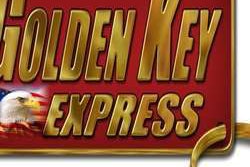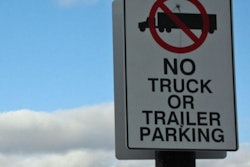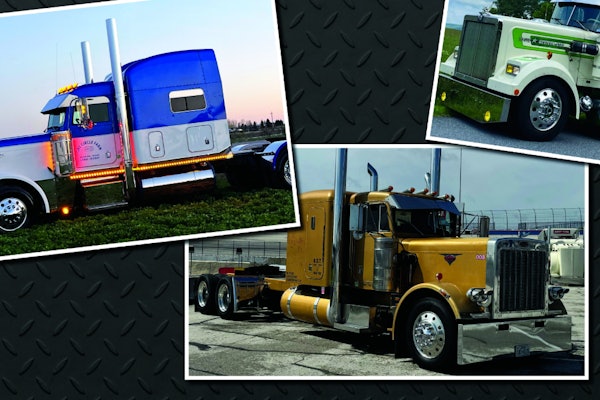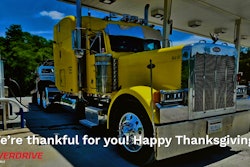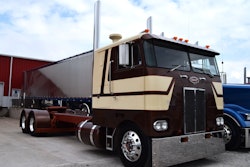Normandin Transit of Quebec focuses on aerodynamics and fuel-saving techniques for its fleet of 250 trucks and 500 trailers that covers the United States and Canada. To boost fuel economy, the company uses trailer skirts and APUs to reduce idling and outfits trucks with wide-single tires, such as those on this Kenworth T660, one of three the company recently spec’d for its aerodynamic features.
Next time you’re rolling down the road at 65 mph, stick your arm out the window. Hold your arm straight up and feel the wind pushing against it, then lower your arm and feel the resistance disappear. That gives you an idea of the dynamic at work between your truck and the air.
At 55 mph, half the energy generated by your truck is devoted to moving air around your vehicle. Speed up to 65 and two-thirds of the energy at your disposal is required to slice through air. The bottom line is the more you make aerodynamics work for you, the less you have to fight the wind and the less fuel you have to burn.
Aerodynamics is an industry buzzword these days. Truck manufacturers are incorporating aero-consciousness into the styling of their newest models and beefing up education for their customers. For example, Volvo Trucks North America recently launched Fuelwatch as a means to help owner-operators and fleet managers achieve maximum fuel economy through proper specs, maintenance, monitoring and driver development.

Everyone’s paying attention, of course, as fuel costs soar. For instance, the last three trucks bought by Normandin Transit of Napierville, Quebec, were new Kenworth T660s, a more aerodynamic update to the manufacturer’s classically aero T600. A 2006 study by the Truck Manufacturers Association and the U.S. Department of Energy concluded that performing a wide range of aerodynamic improvements on a single vehicle could achieve a 23-percent reduction in aero drag, or more than 11 percent in increased fuel economy. In the unlikely event that every tractor/van semi-trailer combination adopted these technologies and boosted fuel economy by 10 percent, the industry could achieve fuel savings of about one billion gallons per year.
“With an aerodynamic truck, when you start adding all those features up, you could be looking at 30- to 40-percent difference in aerodynamic drag,” says Ron Schoon, chief engineer for aerodynamics at Navistar.
The rule of thumb is that a 2-percent reduction in aerodynamic drag will reward you with a 1-percent improvement in fuel economy. While many trucking operators prefer a traditionally styled, boxy-looking truck, an aerodynamic model could save you four cents per mile or more in fuel, according to Peterbilt. A full cab fairing by itself could save 8 to 12 percent in fuel economy.
“The whole idea of aerodynamics is to get airflow up over and around the trailer,” says Ben Smith, manager of product strategy for Freightliner on-highway vehicles. If your roof fairing is just a few inches shy of the top of your trailer, he says, “you’re wasting a few percentage points of fuel economy.”
Spec’ing an axle-back model is a common aerodynamic choice, Smith says, as it allows air to flow more easily around the bumper and past the front tire. Another is attaching fairings around fuel tanks and battery boxes, which can result in up to 3 percent increased fuel efficiency depending on the model. “If averaging 6 mpg and driving 120,000 miles per year and paying $4 per gallon, you’re potentially going to save $2,700 per year,” Schoon says.
Smith also recommends moving wind-catchers like exhaust stacks and antennas to behind the cab and choosing streamlined mirrors over West Coast mirrors. “Mirrors can have a huge aerodynamic penalty,” Smith says. “You want to reduce the number of attachment points and to make the mirror more aerodynamic in shape.
“You pay a penalty if you don’t pay attention to aerodynamics. About 30 to 35 percent of fuel economy is aerodynamics. Tires and rolling resistance is one segment, engine and drivetrain is another, and aerodynamics is the third area of a payback that is money in your pocket.”
Financing to Save Fuel
Economic conditions are discouraging owner-operators and small fleets from investing in technologies to improve fuel economy, says Sharon Banks, founder and CEO of Cascade Sierra Solutions, a non-profit group with two locations in Oregon (including at Jubitz Travel Center) and one in California (Sacramento), dedicated to saving fuel and reducing emissions from heavy-duty diesel equipment. “Fleets are finding it hard to get financing, and many companies are strapped to the gills,” she says. Financing help is available.
Though CSS focuses its efforts primarily on the I-5 corridor, the group has $10 million in bank and foundation funding for truckers anywhere in the country to pay for upgrades. One of the trucking companies CSS is assisting is Bettendorf Trucking, which runs 130 daycabs out of western Oregon and northern California. Bettendorf is buying 11 new trucks – Peterbilt 386s and Kenworth T660s – and is retrofitting 50 others for equipment such as diesel particulate filters, says Bob Phipps, maintenance supervisor for Bettendorf. “If we had to replace our entire fleet to meet upcoming regulations, it wouldn’t be feasible,” he says.
For information about CSS visit www.cascadesierrasolutions.org. For information about federal programs and groups in other states visit www.westcoastdiesel.org/programs.htm.
Where Your Old Truck Goes When It Dies
What was once your pride and joy but is now just too old or wrecked still has value, of course. Even if it’s untradeable, most of a typical heavy-duty truck can be salvaged, recycled or refurbished.
From an average tractor, weighing in at five to six tons, about 90 percent of all materials is steel, which can be sold for scrap. Tires account for about 800 pounds. “We cut out the motor, transmission and rear end and sell them,” says Andrew DeBaise, general manager of R&M Recycling of Commerce City, Colo., which has contracts to dispose of unwanted tractors and trailers for seven of the largest U.S. fleets. “We also paint and sell the wheels and do retreading. The tires can be sold, retreaded or, if retreaded three times already, shredded.”
A truck headed for salvage is handled in a fashion similar to that of an old car. It goes through a shredder, which separates steel from aluminum and nonmetallic material, DeBaise says. Steel, aluminum and ferrous and nonferrous items are separated and recycled. Plastics also are separated and occasionally recycled. “There isn’t a lot of nonmetallic material left, other than some rubber around door frames, plastic in the cab and some fiberglass,” DeBaise says. “Fiberglass is destroyed via shredding and goes to the landfill.”
Green Briefs
International LoneStar ‘Advanced Classic’ tractor joins SmartWay certified fleet
The International LoneStar, introduced in February this year and now available, has been certified by the U.S. Environmental Protection Agency as a SmartWay truck. LoneStar joins the International Pro




